Historical Background
Delve into the heart of Tucson, Arizona, and you will discover a rich tapestry of history that continues to weave its story today. Among the threads that make up this vibrant tableau is the Cathedral of Saint Augustine, a beacon of faith that has stood the test of time.
This iconic building's roots extend back to the Royal Presidio of San Agustin's chapel, established in 1776, as a vivid symbol of the community's resilience and perseverance.
Despite the initial enthusiasm, the presidio and its chapel fell out of use by the 1850s, leaving a spiritual void. This situation prompted Father Joseph Machebeuf's expedition in the 1860s to assess the condition of the locality. Acting on his recommendations, Father Donato Rogieri arrived from Santa Fe, New Mexico, in the early 1860s.
At that time, Tucson was a modest village of adobe homes near the Santa Cruz River. The absence of a house of worship spurred Father Rogieri and his parishioners to construct a brick-by-brick church. The community's commitment to their faith saw the church's completion, affectionately referred to as a cathedral, by 1868.
The following year marked a significant milestone in the cathedral's history as the Holy See declared Arizona an apostolic vicariate. Father Jean B. Salpointe, the pastor of the newly completed church, was appointed Vicar Apostolic, further establishing the cathedral's prominence in the region.
Yet, the cathedral was not destined to remain static. Bishop Peter Bourgade embarked on a mission to rebuild the church in 1897, intending to create a Gothic structure. While the spires envisioned in the original plans were never realized, the cathedral underwent a significant transformation in 1928.
The brick structure evolved into a Mexican baroque edifice with a cast stone façade inspired by the Cathedral of Querétaro in Mexico. This metamorphosis underlined the cathedral's adaptability and its reflection of the evolving community it served.
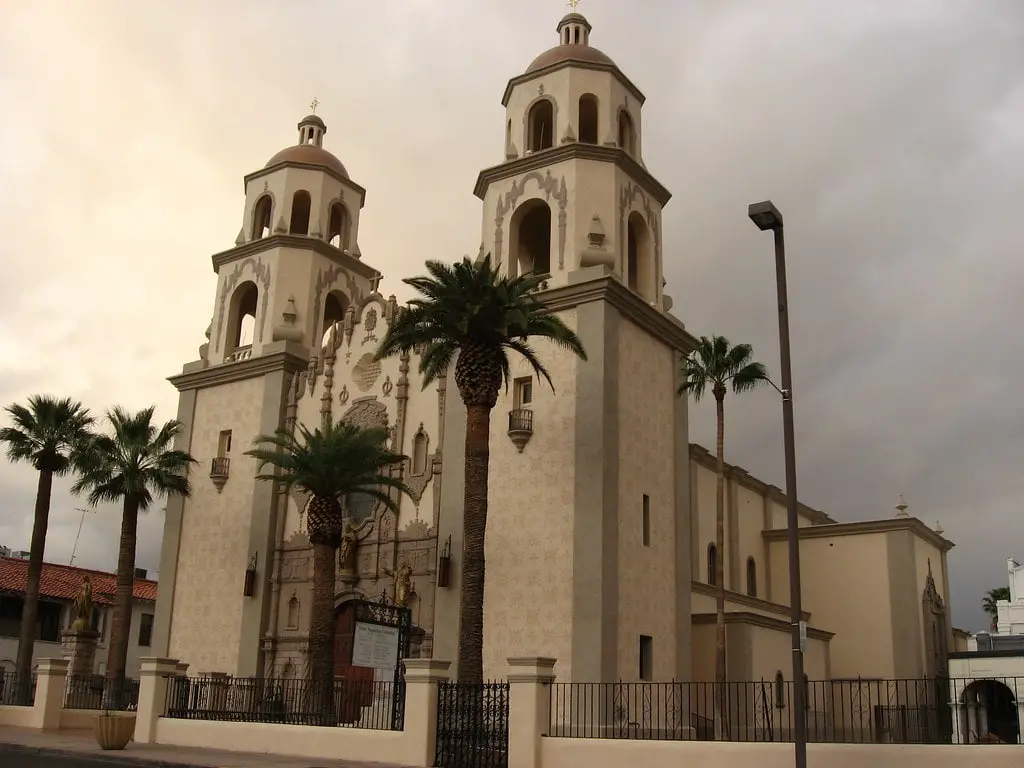
Architectural Significance
The Cathedral of Saint Augustine, more than a place of worship, is a piece of architectural art that blends historical significance with regional influences. Its cast stone façade proudly displays the coat of arms of Pope Pius XI, an homage to the pope during the cathedral's construction.
The design, however, does not stop there. It includes intricate depictions of indigenous desert plants such as yucca and saguaro blossoms, subtly blending the local landscape into the church's design. An artistic nod to the Mission San Xavier del Bac further enriches the façade.
Inside the cathedral, an intentional design element enhances the congregation's experience. With a gentle incline to its flooring, the cathedral guarantees every one of its 1,250 seats a clear sightline to the main altar. This design consideration creates an inclusive worship experience for all attendees.
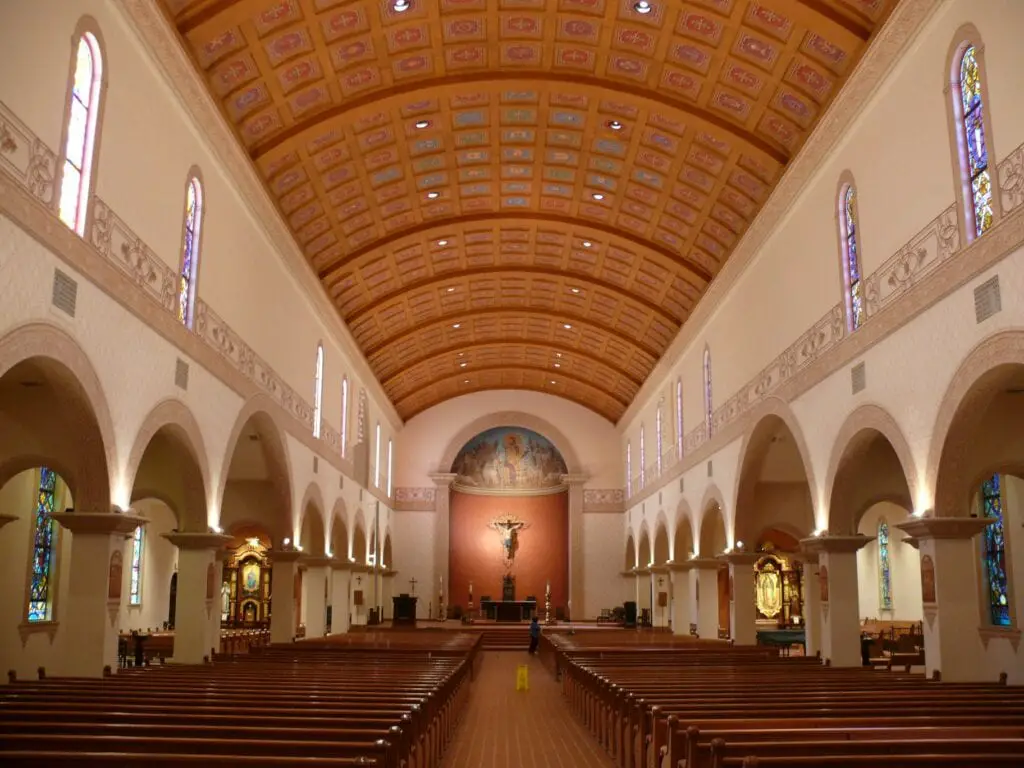
A significant piece of the cathedral's interior is a 12th- or 13th-century crucifix, thoughtfully placed in the cathedral's vestibule. Carved in Pamplona, Spain, this crucifix stands as a silent witness to centuries of devotion, a constant reminder of the enduring faith that the cathedral represents.
The Pipe Organ
The cathedral's pipe organ is another testament to local craftsmanship. Designed and built by Tucson's David McDowell, this instrument breathes a unique rhythm into the cathedral's ambiance.
With thirty-eight ranks, the pipe organ's melodic resonance fills the cathedral, enhancing the spiritual experience for worshippers. This homegrown creation is an instrument and a symbol of the community's talent and contribution to the cathedral.
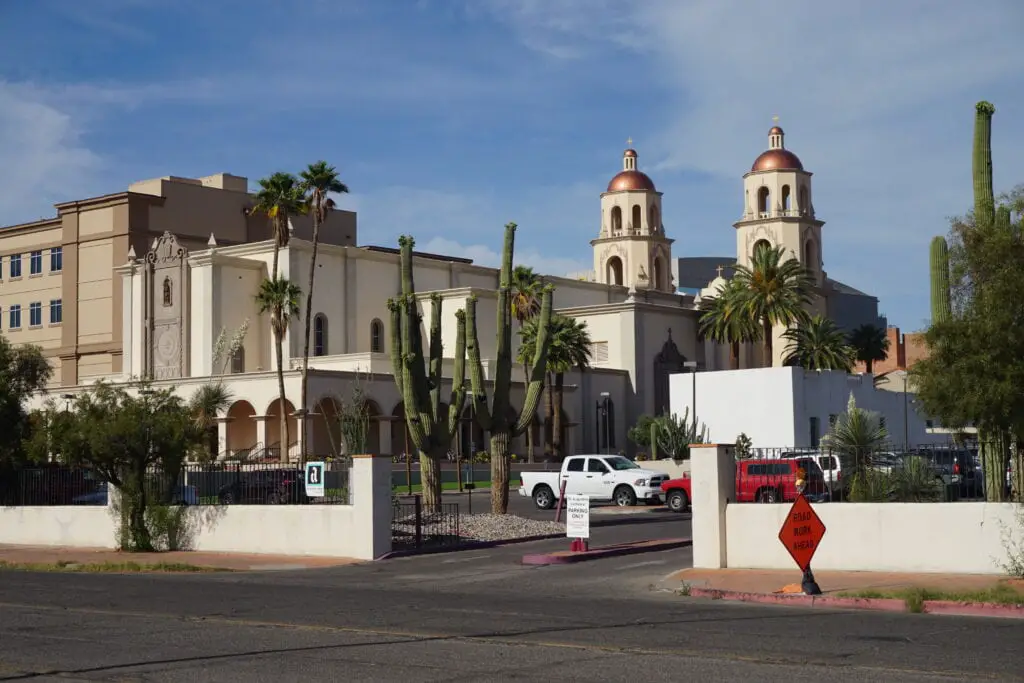
The Cathedral's Transformation
The Cathedral of Saint Augustine underwent a significant transformation about ten years ago, its first comprehensive restoration since 1968. Spearheaded by Phoenix artist and Historic Preservationist John Alan, this project aimed to enhance the sacred space and enrich the worship experience.
The design adopted the Trompe l'oeil painting style, using optical illusions to create a more inviting and inspiring atmosphere within the church.
The renovation included various improvements, from refreshing the stained-glass artwork to adorning the side altars or retablos with handcrafted woodwork. The stained-glass artwork was reimagined to honor the apostles and the first four bishops of Tucson, while the lower level illustrates the history of Saint Augustine.
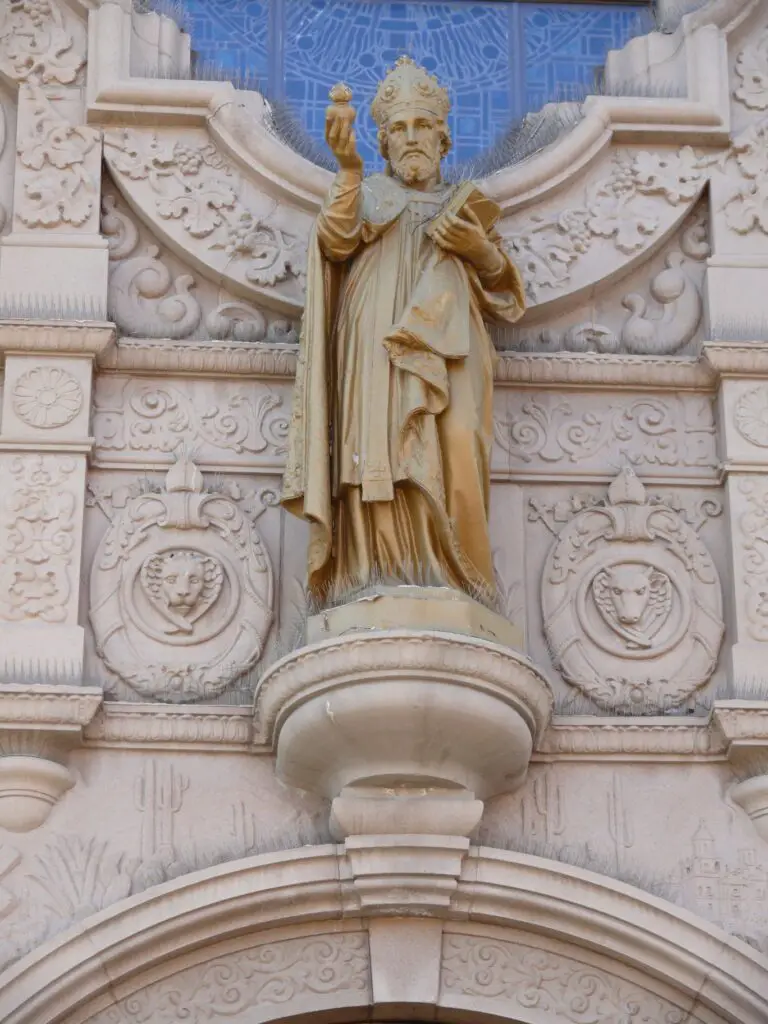
The crowning glory of the renovation is the Pamplona Crucifix. This 17-foot, 2000-pound crucifix, at least 600 years old and carved in Spain, was gifted to the cathedral and installed in 1981. The renovation project focused on preserving, strengthening, and enhancing this sacred object, now resting on the sanctuary's back wall.
Nostalgic Reflection
The Cathedral of Saint Augustine has evolved from a humble adobe church to a spiritual landmark in Tucson.
Its history is intertwined with the community it serves, echoing the changes and growth that Tucson has experienced. The cathedral's transformation over the centuries symbolizes its congregation's enduring faith and resilience.
From the days of Father Donato Rogieri, who led the construction of the first church, to the recent renovations, the Cathedral of Saint Augustine exemplifies the spirit of Tucson. It is more than just a building; it is a testament to the community's unity, faith, and commitment to preserving its spiritual heritage.
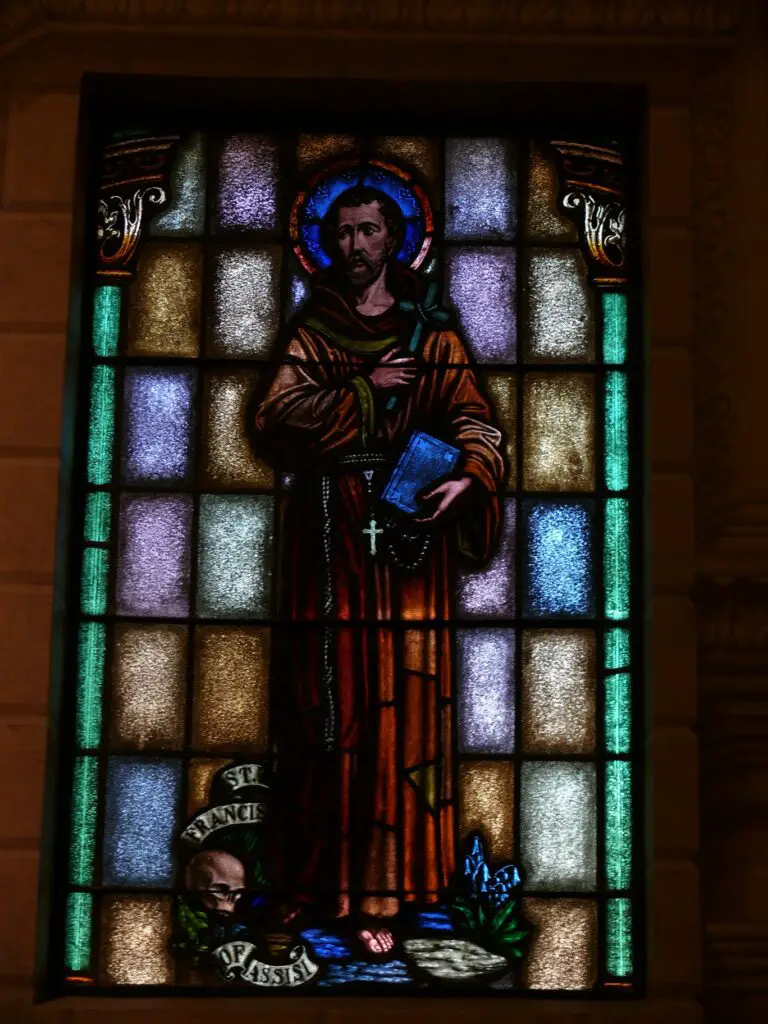
Reflecting on the cathedral's journey, we realize it is more than just an architectural masterpiece or a place of worship. It is a piece of living history that continues to shape Tucson's cultural and spiritual landscape. With each transformation, the Cathedral of Saint Augustine renews its commitment to serve its community, ready to embrace the future while honoring its past.
